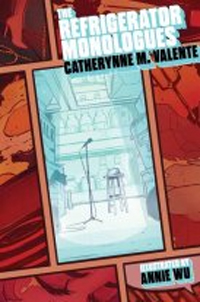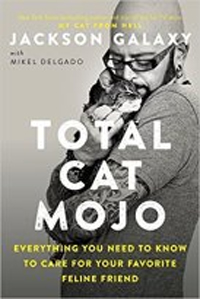Wilder Girls by Rory Power
Being a teenage girl is rough. Being a teenage girl trapped on an island while a mysterious illness transforms you and your friends into strange, animal-human hybrids and destroys the wilderness around you? Well, that’s a hardship I’ll probably never be able to relate to. And that’s what the characters in WILDER GIRLS have to deal with.
Hetty, Byatt, and Reese are three friends bound together by the strange situation they’re in. They attend the Raxter School for Girls. Except classes aren’t really in session. A sickness has taken over the school. Almost all the adults have died, except for two of the younger faculty, Miss Welch and the Headmistress. These two keep the girls in order, helping them learn survival skills and manage their meager supplies.
The illness on the island causes the girls go through painful and unpredictable transformations. Hetty’s right eye fused shut. Reese has a silver-scaled claw for a hand and glowing hair. Byatt grew a second spine. Other girls aren’t so lucky; sometimes, the transformations are too much for their bodies to handle.
Hetty is recruited to the team of girls responsible for bringing supplies from the Navy drop-off back to the school. The job is dangerous, requiring them to face the transformed wilderness that surrounds the school. Just when Hetty thinks the danger can’t get more intense, she discovers a secret that could bring everything crumbling down. And this secret might put Byatt’s life in danger.
Wilder Girls is one of those books that could be categorized for adults if the content were just a little different. As is, however, the author deals with topics like love, betrayal, and family all with a Sci-Fi spin that I think both adult and teen readers can enjoy. I appreciated the depiction of everyday life in a disaster situation. Yes, the school is falling apart, but there are still love triangles and petty disagreements. Life goes on, even when life is mutating around you.
The story is told mainly from Hetty’s perspective, with a few chapters from Byatt’s point of view. While I don’t mind this tactic, it doesn’t work as well in Wilder Girls. The chapters told by Byatt feel too much like what they are: a way for the author to tell readers about the secrets Byatt unwittingly uncovers.
I have a real knack for choosing books that don’t have tidy endings. Wilder Girls is another one of those. Of course, the author could be leaving room for a sequel–and I honestly hope that’s the case. For any criticisms I might have, it’s a really well-written book. In a way, it reminded me of the Southern Reach trilogy by Jeff VanderMeer, which is always a bonus.
On a completely different note, I should say this is my last book review for Joplin Public Library. I’ve accepted a position at another library. JPL has been part of my life since my childhood, when I would walk to the old library on Main Street and spend hours amongst the books. Joplin Public Library has a bright future, and I look forward to being a patron for years to come.

 Future Home of the Living God: a novel by Louise Erdrich — Set in the not too distant future, or maybe just an alternative present, Erdich explores what might happen in a world where humans seem to be devolving. Cedar Hawk Songmaker is a Native American who has been adopted by a white family. And she has a secret: she’s pregnant. In an increasingly dystopian world, can she ensure the safety of herself, her child, and her families? I spent a lot of time frightened for Cedar and she journeys between worlds, both literal and spiritual. Erdich’s story is firmly within the realm of Atwood’s The Handmaid’s Tale.
Future Home of the Living God: a novel by Louise Erdrich — Set in the not too distant future, or maybe just an alternative present, Erdich explores what might happen in a world where humans seem to be devolving. Cedar Hawk Songmaker is a Native American who has been adopted by a white family. And she has a secret: she’s pregnant. In an increasingly dystopian world, can she ensure the safety of herself, her child, and her families? I spent a lot of time frightened for Cedar and she journeys between worlds, both literal and spiritual. Erdich’s story is firmly within the realm of Atwood’s The Handmaid’s Tale. The Refrigerator Monologues by Catherynne Valente — In the world of comic books, there is a term for a select group of characters: Women in Refrigerators. This refers to the disproportionate amount of female characters that are killed in the name of furthering storylines. Valente tells the stories of a series of women characters — no one directly from comics, but recognizable if you’re familiar with many of the big name series — who have been written out of the comics world and spend their time in the afterworld. The characters cover the gamut of emotions associated with such deaths, but also speak to the strength of female friendships. A quick read for anyone who wants a different perspective on the world of comics.
The Refrigerator Monologues by Catherynne Valente — In the world of comic books, there is a term for a select group of characters: Women in Refrigerators. This refers to the disproportionate amount of female characters that are killed in the name of furthering storylines. Valente tells the stories of a series of women characters — no one directly from comics, but recognizable if you’re familiar with many of the big name series — who have been written out of the comics world and spend their time in the afterworld. The characters cover the gamut of emotions associated with such deaths, but also speak to the strength of female friendships. A quick read for anyone who wants a different perspective on the world of comics. Total Cat Mojo by Jackson Galaxy — Let’s be honest: I’m a crazy cat lady. I grew up a dog person, but years ago, my husband introduced me to cats and it’s been all downhill from there. Like any responsible pet owner, I want to make sure my cats are living their best lives. And that means Jackson Galaxy. He’s pretty much the go-to guy for cat people. And TOTAL CAT MOJO is a wonderful resource for all stages of a cat’s life. Plus, he gives great advice for troubleshooting common cat problems like litter box struggles, dealing with stressed kitties, and introducing new family members — from feline to human.
Total Cat Mojo by Jackson Galaxy — Let’s be honest: I’m a crazy cat lady. I grew up a dog person, but years ago, my husband introduced me to cats and it’s been all downhill from there. Like any responsible pet owner, I want to make sure my cats are living their best lives. And that means Jackson Galaxy. He’s pretty much the go-to guy for cat people. And TOTAL CAT MOJO is a wonderful resource for all stages of a cat’s life. Plus, he gives great advice for troubleshooting common cat problems like litter box struggles, dealing with stressed kitties, and introducing new family members — from feline to human.